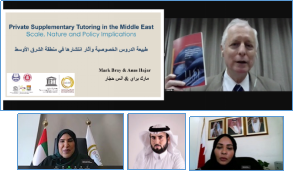"Shadow Education in the Middle East" is coming soon
2021-12-22
CIRIST has a truly global mandate, and is collaborating on research in all parts of the world. Most obvious is China, but alongside that focus is work conducted by CIRIST members in Cambodia, Japan and Myanmar, for example. CIRIST also played a key role in the special issue of the ECNU Review of Education about shadow education in the Nordic countries, and co-sponsored a book about Shadow Education in Africa.
Now, hot on the heels of that book will be a sequel about shadow education in the Middle East. It is being co-authored by CIRIST’s Mark Bray and by Anas Hajar of Nazarbayev University in Kazakhstan. Anas is a Syrian national who has much knowledge of the wider Middle East and has also researched shadow education in England and Kazakhstan.
The book focuses on 12 countries of the region, namely Bahrain, Iraq, Jordan, Kuwait, Lebanon, Oman, Palestine, Qatar, Saudi Arabia, Syria, United Arab Emirates (UAE), and Yemen. In all the countries, Arabic is the (or an) official language, and they have much shared culture. Yet they also display much diversity, especially in economics. Six of the countries are prosperous members of the Gulf Cooperation Council (GCC), while the others are lower-income neighbours.

A key partner in preparation of the book is the UNESCO Regional Center for Educational Planning (RCEP) in the UAE. RCEP helped collect data from Ministries of Education in the region, and on 22 November 2021 hosted an online Policy Forum.
The Policy Forum was a bilingual English and Arabic event, and focused on a draft of the book in both languages. It was attended by 33 participants, including personnel from Ministries of Education across the region, researchers with strong expertise in the theme, teachers, and tutors. Many participants also drew on their own experiences as former students and/or as parents.

The Policy Forum validated the core messages of the manuscript while also providing additional insights and access to follow-up materials. Participants indicated that the event also stimulated their own thinking about appropr iate actions to address shadow education more effectively.